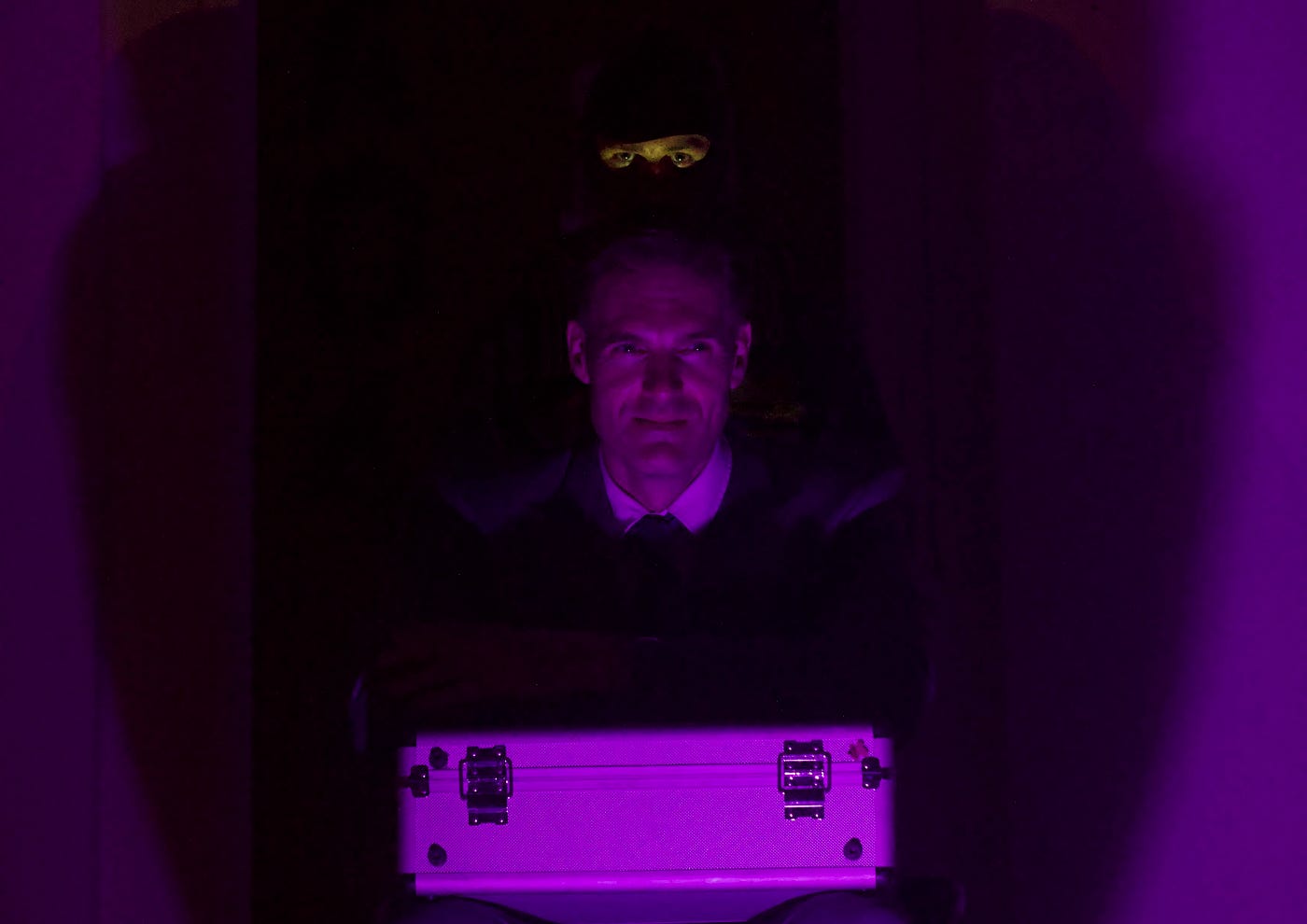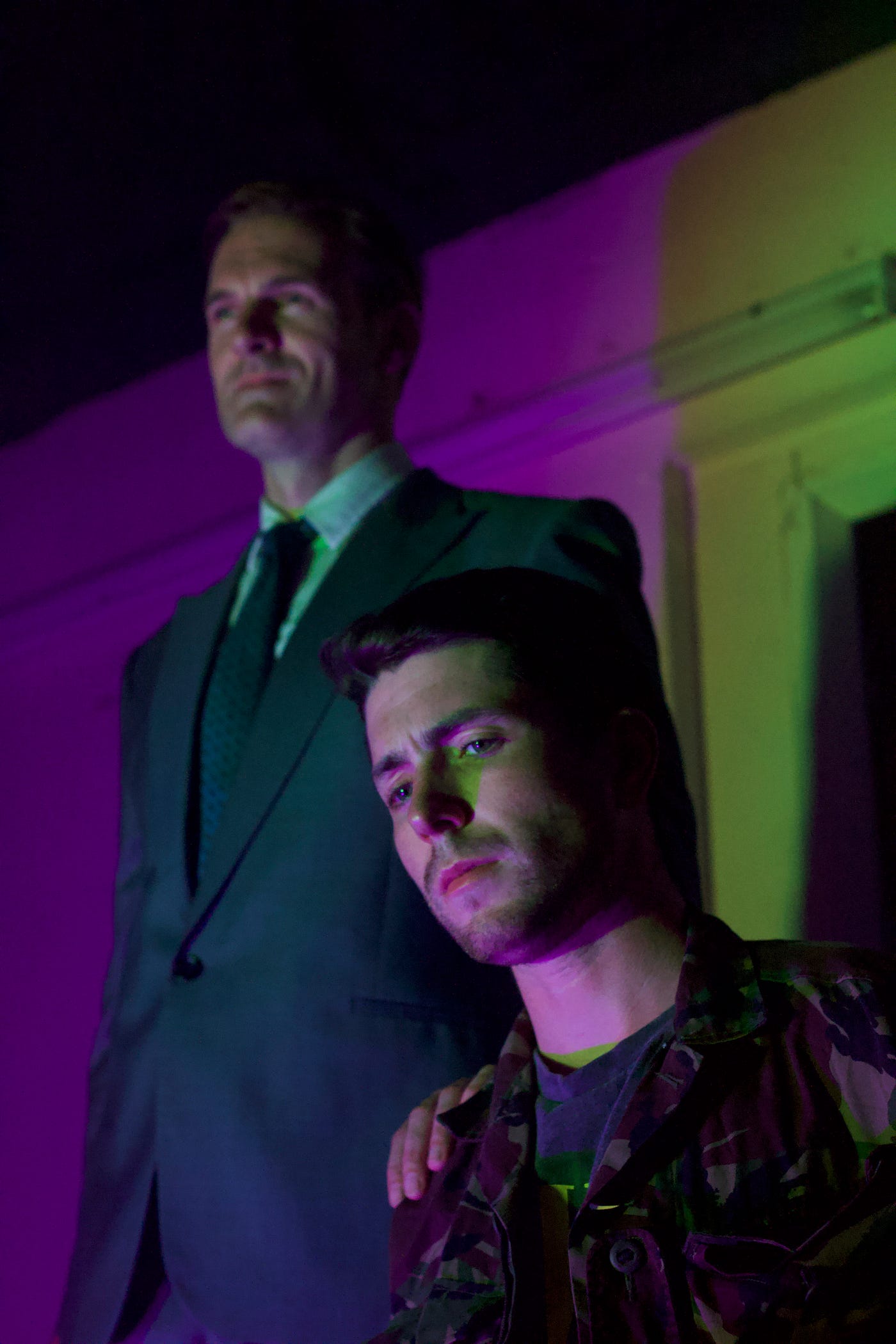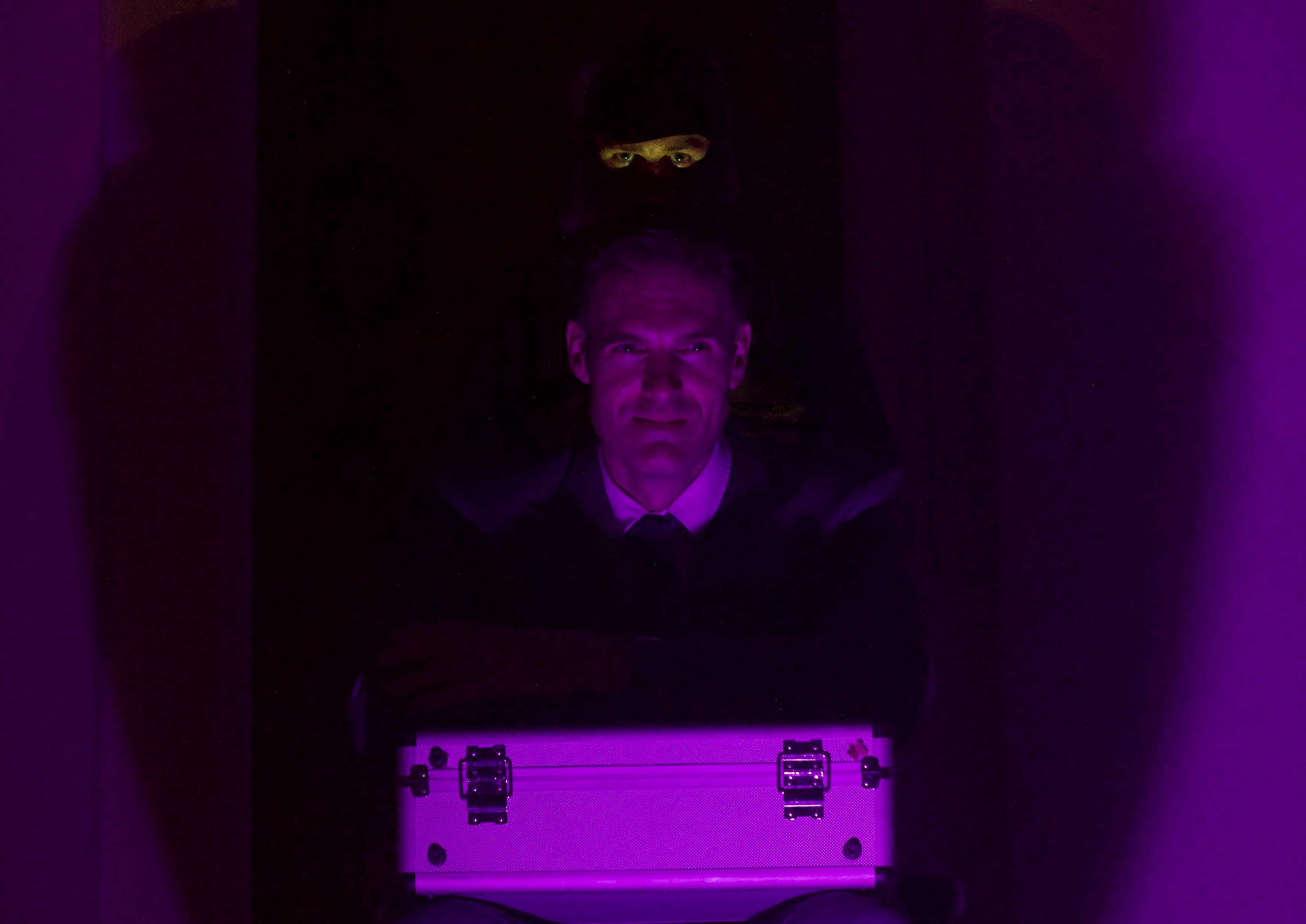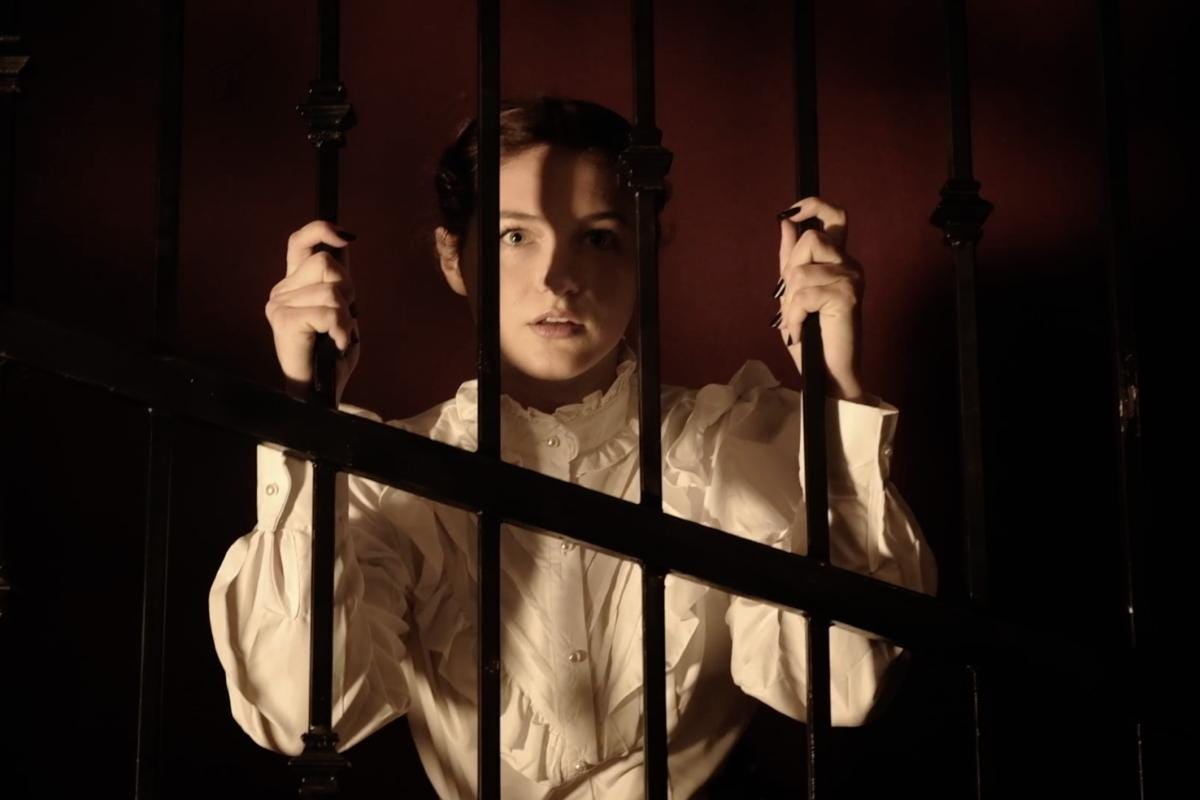
After the glut of immersive performances that annually flood London during the wintertime VAULT Festival — which keep fans busy but shivering in the frigid weather — I take a moment to appreciate the warm breeze on my face as I approach my evening appointment with Spy City in the London Bridge neighborhood. A summertime immersive show is a rare treat and if the latest — and reportedly final — installment in CoLab Theatre’s “espionage series” (first started in 2014) is anything like its predecessors, I’m already looking forward to spending a good portion of the performance out of doors wandering between locations. This is a new region for a CoLab production and I’m pleased; after a run of several shows in the same building (the CoLab Factory in Borough) it helps to shake up for faithful patrons by removing them from familiar ground.
Spy City’s promotional material emphasizes that the focus is on the players, that the fourth wall will be pushed and that the audience becomes the main character and protagonist in the story. I arrive at the correct starting location and spend the first ten minutes texting back and forth with a contact on the inside: I must pass a series of questions about the nature of lying and subterfuge. Eventually I am granted entry to a nondescript safehouse bar where I recognize a familiar CoLab face holding down the fort (Christopher Styles, from For King & Country: 1944). He’s as charming as before. I’m quickly made comfortable while we wait for the other guests to arrive, but he’s pulling double-duty as both bartender and safehouse coordinator, and I don’t get much opportunity to interact with him to get a sense of what’s going on while he’s working to get the other arrivals ushered in and corralled.
Once we’re gathered our handler delivers speedy exposition: that we’re about to undergo a medical examination (a standard part of the process of becoming agents as we’ve all reportedly applied to become) but that things are not as they appear. This briefing has us glancing at each other: how invasive is this examination going to be within the confines of the performance? Our coordinator warns us that the doctor is not to be trusted, that she’s a member of the opposition and will use the results for nefarious purposes.

After meeting her, it’s not a difficult directive to follow: I wouldn’t trust her anyway. Her manic manner and goofy grin unnerves me — without much previous in-narrative interaction with other actors I can’t tell if this first display is an attempt at comedic acting or just an unsubtle demonstration of her untrustworthiness. Either way, I’m still unsure as to the seriousness or the stakes of the situation. She proceeds to carry out a number of tests on us, performing non-invasive physical procedures — she “draws blood” and applies Band-aids (no needles, no punctures, but a very convincing bit of trickery with a syringe and stage blood) but all the while asking more and more penetrating questions about our personal memories.
We are suddenly and unexpectedly liberated from her examinations by a comrade of our safehouse contact; suddenly we’re sent abroad into London with little more than a pile of walkie-talkies and the pointed guidance of our new handler. Out of the building, into the streets, on a mission to stop the plans of the doctor’s co-conspirators. We’ve become conscripted into a rescue mission — part reconnaissance, part break-in and jailbreak.
Get Shelley Snyder’s stories in your inbox
Join Medium for free to get updates from this writer.
SubscribeSubscribe
What follows is an hour of fairly convoluted narrative, but the pacing is brisk and we’re rarely mired in any single encounter. Between making contact with a double agent, breaking into a detention compound, and locating key documents and an imprisoned comrade while evading capture, we’re kept too busy to question any plot points relayed to us by our guide. The setting for the second act and climax of the performance is lush and captivating: the compound we sneak into is a warren of claustrophobic stairwells and operations rooms monitored by a complex CCTV system, with guards who apprehend and imprison trespassers who aren’t savvy enough to evade their paths. However I find myself disappointed through the first half: for all the fancy dressing and elaborate planning this is still just a complex escape room experience and I’m not seeing much dynamic theatricality. I feel emotionally shackled by my teammates who are engaged in the puzzle-solving process but are not very adept at “playing pretend” — any opportunity to interact in-narrative along with the performers we encounter is missed entirely in their pursuit to be the funniest person on radio or to get to the next checkpoint. I know what CoLab is capable of and I find myself wishing that another actor would come along and perform alongside our handler, taking the burden of narrative out of the audience’s hands.
Our group is woefully unsuited to the task — this business of shifting focus onto the audience as protagonists does not seem to work well when the audience is not experienced or keen on driving the story themselves.
Our guide stays with us throughout the experience; he does an excellent job wrangling the less serious members of our party with his in-character quips and commitment to the scenes, but I’m giddy when we finally come up against another performer who actually interacts with him. This is the theatre I’ve been craving and the actors don’t disappoint, but to my dismay it’s over far too soon for my liking, and I’m back to relying on my teammates for the denouement and epilogue. While we hit all the correct story notes and make all the necessary contacts, I admit I find my emotional experience lackluster compared to what I know it could be with a more adept crowd.

The takeaway lesson taught by Spy City is the same mantra for many other sprawling immersive performances: that fortune always favors players who buy in and commit to the game. Those who can encourage their team to take the mission seriously will enjoy a richer experience and could even snag a special opportunity or interaction while they’re at it, though the structure is very much team-oriented and there seems to be little to no opportunity for solo opportunism. Be assured that there are levels to the performance and the experience is tailored to the puzzle-solving skill set of the players — more savvy audiences will be more rigorously tested along the way as the production team imperceptibly adds handicaps to the tasks in real-time, but less experienced visitors will still be ducking, dodging, and crawling through a labyrinth of challenges.
As I wander off alone again after the experience I think back on the last 90 minutes, tracing back through the plot points and considering my interactions with each operative. I try to work out who was on whose side, and who was on their own side. I try to determine if we did the right thing, if we made the right choices in the end. As I enter London Bridge station to catch the train home I realize my fingers have been worrying a fresh bandaid on my thumb and I consider leaving it on to let myself heal. Then I suddenly remember, smirk, and peel it off.
For the twenty minute walk back to the station I’d been so lost in the plot that I’d forgotten it wasn’t real.
Spy City continues through August 31. Tickets are £24.50.
NoPro is a labor of love made possible by our generous Patreon backers. Join them today!
In addition to the No Proscenium web site, our podcast, and our newsletters, you can find NoPro on Twitter, Facebook, YouTube, Instagram, in the Facebook community Everything Immersive, and on our Slack forum.
Office facilities provided by Thymele Arts, in Los Angeles, CA.















Discussion